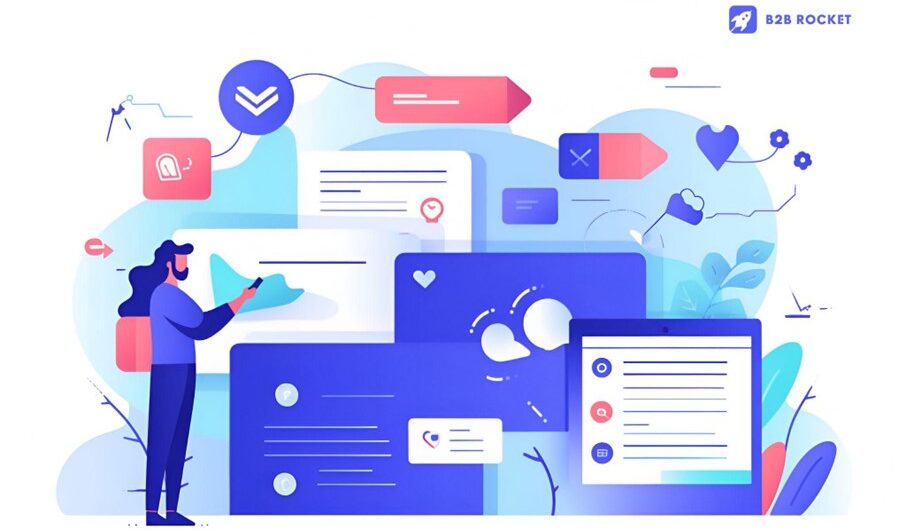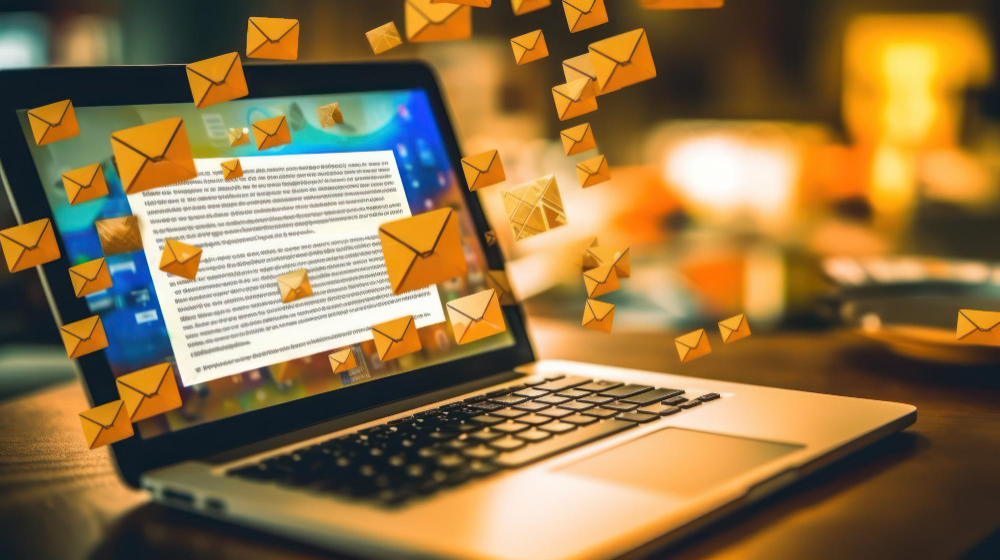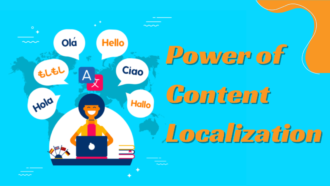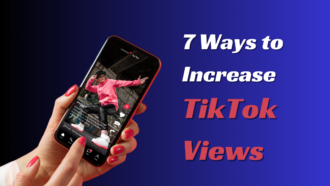B2B Email Marketing Automation: Best Practices Explained
- 1 Understanding B2B Email Marketing Compliance
- 2 Defining B2B Email Marketing Compliance
- 3 Understanding Relevant Laws and Regulations
- 3.1 Overview of CAN-SPAM Act and its impact on B2B email marketing
- 3.2 GDPR: What it means for B2B email marketers
- 3.3 Compliance considerations for international markets
- 4 Best Practices for B2B Email Marketing Automation
- 4.1 Obtaining Proper Consent and Permission
- 4.2 Maintaining Accurate and Updated Email Lists
- 4.3 Providing Clear and Transparent Opt-out Options
- 4.4 Ensuring Data Security and Confidentiality
- 4.5 Implementing Double Opt-in and Confirmation Processes
- 5 Benefits of Compliant B2B Email Marketing Automation
- 5.1 Building Trust and Credibility
- 5.2 Avoiding Legal Consequences and Penalties
- 5.3 Improving Email Deliverability and Engagement
- 6 Conclusion
In today’s digital era, B2B email marketing campaigns have become an essential tool for small businesses to reach potential customers and increase their conversion rates, incorporating sales automation for streamlined processes. However, ensuring compliance with email marketing best practices can be challenging.
Email automation helps small businesses simplify and improve their email marketing efforts, making it easier and more efficient. B2B email marketing tools with sales automation features assist businesses in managing email templates, mobile optimization, and other essential elements to reach their marketing goals.
In this article, we will explore the best ways to use email automation for sales effectiveness. This includes leveraging transactional emails, nurturing email subscribers through automated processes, and offering a free trial with automated follow-ups. We will also discuss how to keep your audience engaged with blog posts and informative newsletters using sales automation. By utilizing these strategies, small businesses can optimize their email marketing campaigns, enhance sales automation processes, and drive successful results.
Understanding B2B Email Marketing Compliance
B2B email marketing compliance is essential in today’s digital landscape. Following email marketing rules and regulations builds trust, maintains reputation, and ensures campaign success for businesses.
Compliance involves obtaining permission before sending emails. It also requires providing clear and accurate information about the purpose of the emails. Additionally, compliance entails offering a simple method for individuals to unsubscribe from receiving further emails if desired. Businesses can use these guidelines to comply with B2B email marketing rules, reach their target audience, and achieve marketing goals.
Defining B2B Email Marketing Compliance
Following the rules in B2B email marketing practices is really important. It helps you keep your audience’s trust and avoid getting into trouble with the law. To understand what you need to do, you have to learn about the specific guidelines for email marketing. A big part of this is knowing about data protection laws and rules about spam.
It’s also important to know the difference between opt-in and opt-out consent. Opt-in requires permission for emails, while opt-out sends emails until someone says they no longer want them. It’s crucial to focus on compliance so you don’t break any laws.
To be successful in B2B email marketing, you need to follow the rules at every step. Trying out different methods and automating processes can increase email click rates while staying within the guidelines. Using automation that respects people’s privacy choices helps you follow the rules and connect with your target audience.
Understanding Relevant Laws and Regulations
Overview of CAN-SPAM Act and its impact on B2B email marketing
The CAN-SPAM Act is a US law that controls commercial emails and aims to prevent unsolicited pornography and marketing. The act aims to reduce spam emails for consumers and also affects B2B email marketing.
According to the CAN-SPAM Act, B2B marketers are required to follow certain rules. These rules include using clear subject lines, providing a real address, and allowing recipients to unsubscribe from their emails easily. Additionally, the act prohibits misleading or deceptive practices in email marketing campaigns.
The CAN-SPAM Act is important for B2B email marketing. It ensures transparency, privacy, relevance, trust, and legitimacy in business communications.
GDPR: What it means for B2B email marketers
GDPR, which stands for General Data Protection Regulation, has significant implications for B2B email marketers. Under GDPR, businesses must obtain explicit consent from individuals before sending them marketing emails. This means B2B email marketers need to ensure that they have proper consent from recipients to avoid penalties.
Additionally, GDPR mandates that individuals have the right to unsubscribe from email lists and have their data erased. B2B email marketers need to make it easy for people to opt out and quickly delete their data when asked. GDPR focuses on data privacy and transparency, making B2B email marketers change their practices to follow the new rules.
Compliance considerations for international markets
When expanding your B2B email marketing efforts internationally, understanding the specific laws and regulations of each target country is paramount. Considerations may include language requirements in content disclosures or opt-out options tailored according to local legal frameworks. Conducting thorough research will help ensure compliance across different jurisdictions while avoiding potential penalties or damage to your brand segmentation.
Best Practices for B2B Email Marketing Automation
For B2B email marketing automation, there are a few best practices that can greatly enhance your campaign’s effectiveness. First, it’s important to segment your audience and tailor your messages accordingly. You can deliver personalized and relevant content by understanding your target market’s specific needs and interests.
Automation tools help with timely and consistent communication. It’s important to plan email frequency to avoid overwhelming or annoying recipients.
A/B testing can improve email campaigns by finding the best subject lines, content, and calls to action. Finally, don’t forget to regularly analyze and track your email metrics to assess your campaign’s performance and make necessary adjustments.
Obtaining Proper Consent and Permission
Providing a clear explanation of the purpose of collecting email addresses is essential for obtaining proper consent and permission. Clearly communicate why you are collecting email addresses, such as to send relevant industry updates or promotional offers.
Using an opt-in checkbox for subscribers to actively give consent ensures that individuals are willingly providing their contact information. This helps in compliance with data protection regulations and demonstrates your commitment to respecting privacy.
Including a link to your privacy policy in the subscription process provides transparency and reassurance for subscribers. Knowing how their personal information will be used, stored, and protected helps people build trust between you and them.
Maintaining Accurate and Updated Email Lists
Regularly cleaning up bounced or undeliverable email addresses is crucial for maintaining accurate and updated email lists. By removing these invalid addresses, you can ensure that your emails reach the intended recipients and improve deliverability rates.
Implementing an email validation system helps verify the accuracy of email addresses in your list. This process reduces the risk of sending emails to incorrect or non-existent addresses. It guarantees the delivery of your messages to real individuals who are more likely to respond.
Segmenting your email list based on engagement levels allows you to personalize target active subscribers effectively. Customize your content and offers for different groups to boost engagement and improve the likelihood of converting interested individuals.
Providing Clear and Transparent Opt-out Options
Including an unsubscribe link in every marketing email you send is essential to providing clear and transparent opt-out options. By prominently featuring this link, recipients can easily express their preference to stop receiving future communications. Additionally, offering a ‘one-click’ unsubscribing option without requiring additional information from the subscriber further enhances the user experience.
Promptly honoring unsubscribe requests is crucial for compliance with regulations like GDPR. Processing opt-out requests quickly builds trust and shows respect for your audience’s preferences. Businesses can stay transparent and follow data protection rules by allowing easy unsubscribing and promptly honoring those requests.
Ensuring Data Security and Confidentiality
To succeed in B2B email marketing automation, data security, and confidentiality are crucial. In today’s digital era, where cyber threats are increasing, businesses must take all necessary precautions to safeguard their valuable data. By implementing strong security measures such as encryption and secure servers, companies can protect sensitive customer information and prevent unauthorized access. This not only builds trust with clients but also ensures compliance with data protection regulations.
By keeping data secure and private in B2B email marketing automation, businesses protect themselves and improve customer satisfaction and professional relationships. It is crucial to encrypt sensitive customer data both during transmission and storage in order to ensure its security and confidentiality. By using powerful encryption algorithms, we can safeguard the information from unauthorized access or interception.
Checking for security issues regularly helps us find weaknesses in our systems, fix them quickly, and prevent breaches. Ensuring that databases are secure by controlling access to customer information guarantees that only authorized personnel can view or manipulate the data.
Implementing Double Opt-in and Confirmation Processes
When implementing double opt-in and confirmation processes for your B2B email marketing, consider the following best practices:
- Clearly explain the benefits of opting in to encourage potential subscribers.
- Send an initial confirmation email with a clear call-to-action to confirm their subscription.
- Follow up with a second confirmation email or notification for added security.
By utilizing these processes, you can ensure that you add only interested and engaged people to your email list. This will improve the rate of email delivery and help you efficiently comply with data protection regulations.
Benefits of Compliant B2B Email Marketing Automation
Compliant B2B email marketing automation offers a multitude of benefits for businesses. It makes sure that all communication follows the law and privacy rules, avoiding legal problems or harm to the brand’s image. Secondly, it allows for personalized and targeted messaging, utilizing data segmentation and analytics to deliver relevant content to specific audiences. This increases the chances of engagement and conversion.
Automation saves time and resources by doing repetitive tasks, like scheduling emails and follow-ups. This lets employees concentrate on important initiatives. Overall, compliant B2B email marketing automation improves efficiency, compliance, and results in a more effective marketing strategy.
Building Trust and Credibility
Implementing a double opt-in process for subscriber consent is crucial in building trust and credibility. This ensures that individuals actively confirm their desire to receive emails, minimizing the risk of complaints or accusations of unsolicited communication. Businesses can gain the trust of subscribers by having clear privacy policies and promising responsible handling of personal information. Personalizing email content not only enhances relevance but also shows attentiveness toward individual preferences, strengthening the bond between businesses and subscribers.
Avoiding Legal Consequences and Penalties
Ensuring compliance with the CAN-SPAM Act and GDPR is crucial for B2B email marketing success. To prevent legal problems, make sure to include an unsubscribe option in every email.
This allows recipients to easily opt out of receiving future emails. Additionally, maintaining accurate sender information helps establish trust and credibility with your audience while also meeting legal requirements. Stay on the right side of the law by implementing these essential practices in your B2B email marketing automation strategy.
Improving Email Deliverability and Engagement
Regularly cleaning your email list is crucial for improving email deliverability and engagement. Removing inactive subscribers ensures that your emails reach an engaged audience. This engaged audience is more likely to open, click, and convert. Segmenting your audience by interests or demographics helps create targeted campaigns that connect with specific subscriber groups.
To boost engagement further, it’s important to monitor open rates, click-through rates (CTR), and conversion metrics. These metrics show how well your email campaigns are working and help you make better decisions based on data.
Conclusion
To effectively reach your target audience in B2B lead generation, it’s important to use B2B email marketing automation and follow compliance best practices. With the rising use of mobile devices, optimizing your email newsletters for mobile viewing is essential for driving engagement and conversions in B2B lead generation. Tracking and analyzing open rates can give insights into campaign success, helping make informed decisions and improve the B2B email marketing strategy. By incorporating these key elements in B2B lead generation, you can maximize the impact of your B2B email marketing campaigns and achieve the desired results.
In B2B email marketing automation, compliance holds utmost importance as it ensures businesses maintain the trust and respect of their customers while avoiding potential legal consequences. Following rules and standards enables businesses to protect customer data and create content that resonates with their target audience.
Implementing compliance in B2B email marketing automation has several benefits. These benefits include safeguarding customer data, building trust, reducing legal risks, and improving marketing campaign success. B2B Rocket’s AI Agents assist businesses in achieving success with automated email marketing by following best practices.




















